Free Pitcher's Training eBook Reveals
How To Develop Athletic Pitchers And Train Them With An
Emphasis On Speed, Power & Movement

...and they must be treated as such. The act of pitching is an explosive, total-body movement.
There is nothing slow about it. Thus, our
overarching goal in training pitchers is to make
them fast, powerful, and explosive -- so that's how
they should train.
However, several factors separate pitchers from the rest of the team and these should be taken into account when developing a training program.
In this PDF eBook, you're getting the complete, individualized strength & conditioning approach utilized to assess, develop and train athletic pitchers that move explosively.
Movement Over Maxes
Developing The Foundation for Baseball Performance
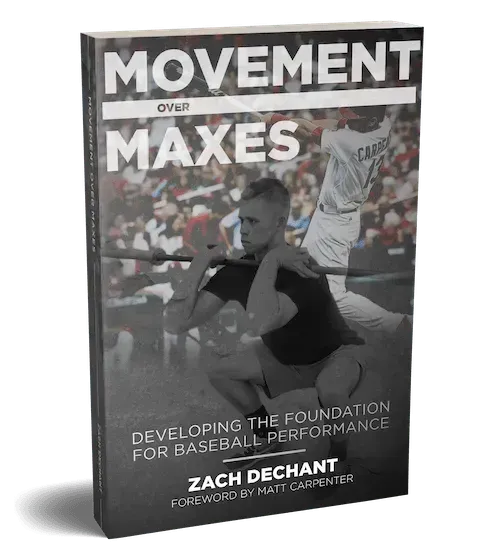
"If you want to improve your program and give your athletes a winning edge, this book is a must!"
Movement Over Maxes is a Foundational Program that serves as the starting point for any athlete. It functions as a guide for all coaches to begin to understand and implement basic movement patterns with a long-term development approach.
This was created for the coach who wears every hat for their program... The coach who mows the grass, drags the infield, handles the equipment, AND trains the athletes! This is for the coach who devotes their life to not only creating better baseball players, but growing boys into men through the sport.

About The 8 Vector System
The 8 Vector System was created and published by Jordan Nieuwsma and Nick DiMarco from Elon University. The 8 Vector System is a mental model that allows you to organize the vast amounts of movement variations in sport. The purpose of this is to prepare athletes by physically preparing their bodies and tissues to efficiently decelerate, withstand, and transmit force in all directions.
First, you have to understand what a force vector is because this provides a lot of contextual value. A force vector represents a force that has both magnitude and direction and has three components. The components of a force vector:
1) Point of application (Insertion)
2) Magnitude
3) Direction
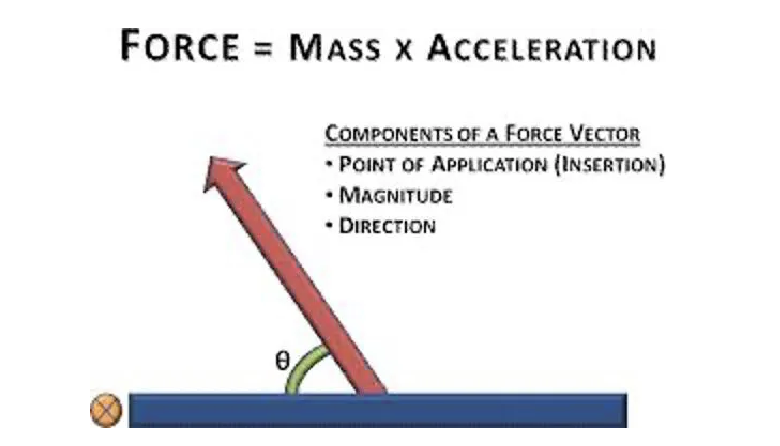
This is extremely critical in all team sports because sports require athletes to accelerate, decelerate, change direction, and then reaccelerate throughout the duration of the game. Or in terms of Elon Sports Performance athletes decelerate, withstand, and transmit force over and over throughout the course of the game. When reverse engineering each sport down to the small components you see a common pattern, and specifically, the most common degrees of cuts.
Understanding the most common degrees of cuts becomes important because, then you can start putting a framework together to help prepare your athletes for the demands of their sport. This has already been done for you and that’s how the 8 Vector System got created. Our belief is that if your athletes can master these 8 Force Vectors then are they prepared for any other degree of cut they has face on the field of play. This framework and mental model can be and should be applied to a multitude of areas in your programming.
Performance Prep (Warm Up)
Speed
Change of Direction
Plyometrics
Agility
Power
Strength
Energy System Development
Injury Rehabilitation
The 8 Vectors
The 8 vectors are broken down into 4 vectors on each leg, both left and right. You will do 4 cuts on the right leg, then 4 cuts on your left leg. The progression I will present you with is the order from largest cut to small cut, or easiest to hardest degrees of cuts.
Each leg (left & right), will use the following degrees of cuts:
135 Degrees, which is the typically the first cut
90 Degrees is next
45 Degree cut then follows
0 Degree cut afterwards
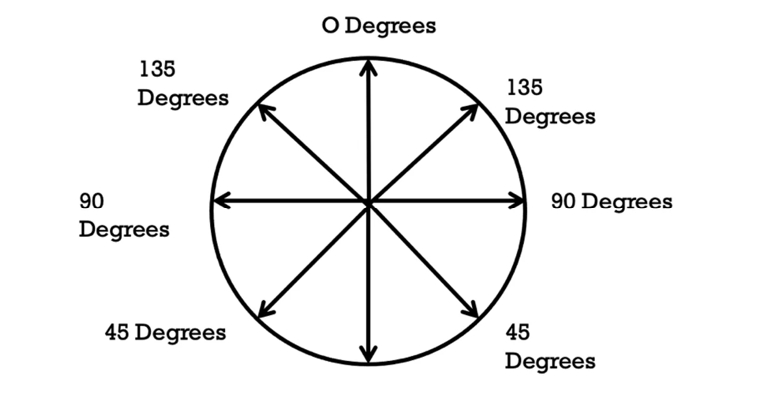
Once you have a firm understanding on the 8 Vectors, you can start to progress the complexity by adding context to what your athletes may see and face in practice and a game. First, you can add intensity of effort (speed) by adjusting the level of effort, examples being going at 50% effort, to 60%, 70%, and then to 100% effort. This is an important concept because you need your athletes to master the basics of each cut prior to adding speed and focusing on the push off the cut leg. Two coaching points that I suggest are turning your foot in the direction of your cut, and pushing off the inside edge of your foot.
As the degree of cuts become increasingly more difficult, one thing to do is to teach your athletes how to make them less difficult. Start with telling them to turn their foot in the direction of the cut, this becomes particularly important in the 45 and 0 degree cut. If their foot is straight and they are attempting to turn their body completely around, then they are asking for an injury to happen. Therefore, teaching your athletes to turn their foot as much as then can prior to them planting because this helps them with the point of application, the magnitude and the direction of the force vector that they will then be applying on the ground. Secondly, emphasizing to all of your athletes to push off the inside edge of their foot. This becomes a really strong position because the hip will go into internal rotation (IR), which will help them produce more force.
Is this really for everyone?
Yes, this system is really for every athlete. Looking at others sports as well and using basketball and football as examples. In basketball, terms like L cut, V Cut or a flare cut, they all fall in line with the degrees of cuts presented to you. When looking at and comparing how this stacks up against the best players in the NFL and their route tree, you can see the exact same degrees of cuts. For example, looking at the 2022 Superbowl MVP, and Offensive Player of the Year, Wide Receiver for the Los Angeles Rams, Cooper Kupp. His route tree is below:
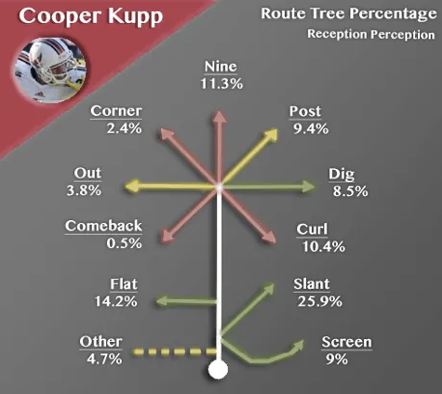
In conclusion, you now understand what a force vector is, why it is important, and how implementing the 8 Vector system can be a huge benefit to your program and your athletes. Understanding that the 8 Vector System is a mental model that allows you to organize the vast amounts of movement variations in sport. The purpose of this was to help you understand how you can prepare athletes by physically preparing their bodies and tissues to efficiently decelerate, withstand, and transmit for in all directions. Overall, much like everything else in the strength and conditioning world, this is a tool that adds variety, complexity and overall athleticism that you can use to help your athletes.
Kendrick Pratt is currently a strength and conditioning coach at TCU working with baseball,
football, and volleyball. Prior to arriving at TCU, Kendrick work as an Assistant Sports
performance coach at University of Illinois Springfield, and completed internships at Elon
University and the University of Louisville. Before being a strength and conditioning coach,
Kendrick spent 5 years Active Duty in the Army as an Armor Officer, and is still currently serving
as a Captain with the Texas National Guard. Kendrick also played 3 years of college football.
Kendrick has his M.S., CSCS, and USA-W Level 1.
You can follow Kendrick on social media:
Instagram – https://www.instagram.com/coach_kendrick44/
Twitter – https://twitter.com/CoachKendrick44
CONNECT WITH ZACH ON TWITTER
ABOUT ZACH DECHANT
Zach has been in place since 2008 at TCU and is the current Assistant Athletic Director of Human Performance. He oversees the development of Baseball. Alongside those priorities he also handles the development and implementation of the TCU Sports Performance Internship Program that has been in place for over 15 years. Over that time the internship program has encompassed 40+ semesters and 250+ intern coaches that have moved on to all levels of professional, collegiate, high school, and private strength and conditioning.
During baseball off-seasons, Coach Dechant trains a group of 30+ current MLB / MiLB Frogs. The pro Frogs spend 4 months back on campus training for the upcoming season...
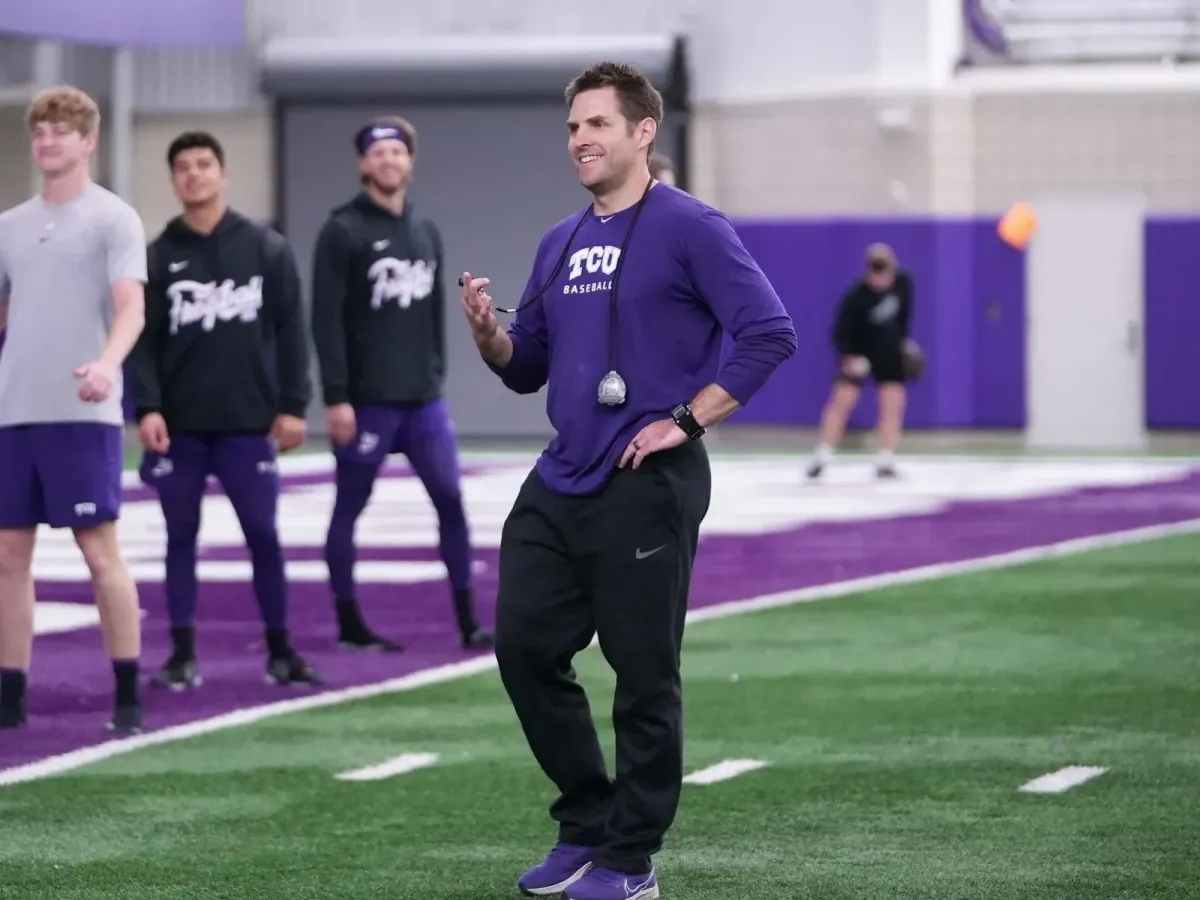

©️ 2024
